I thought I knew how to make rice. Dump it in the rice cooker, add water, and click on. But then our rice cooker began shedding non-stick coating into our grains, and the big scare hit about unacceptable levels of arsenic in rice. To address both issues, we ditched the extra appliance and began using the cooking method below. The easy technique of rinsing and boiling rice like pasta not only produces perfect results with no sticking, it also cuts the arsenic level by 30 to 45 percent, according to studies.
This is intended as a supporting post for my book, Eat Dairy Free, and my upcoming book, the 2nd Edition of Go Dairy Free, so I’m going to provide additional helpful information to help lower the arsenic load even more and to reap some extra nutritional benefits.
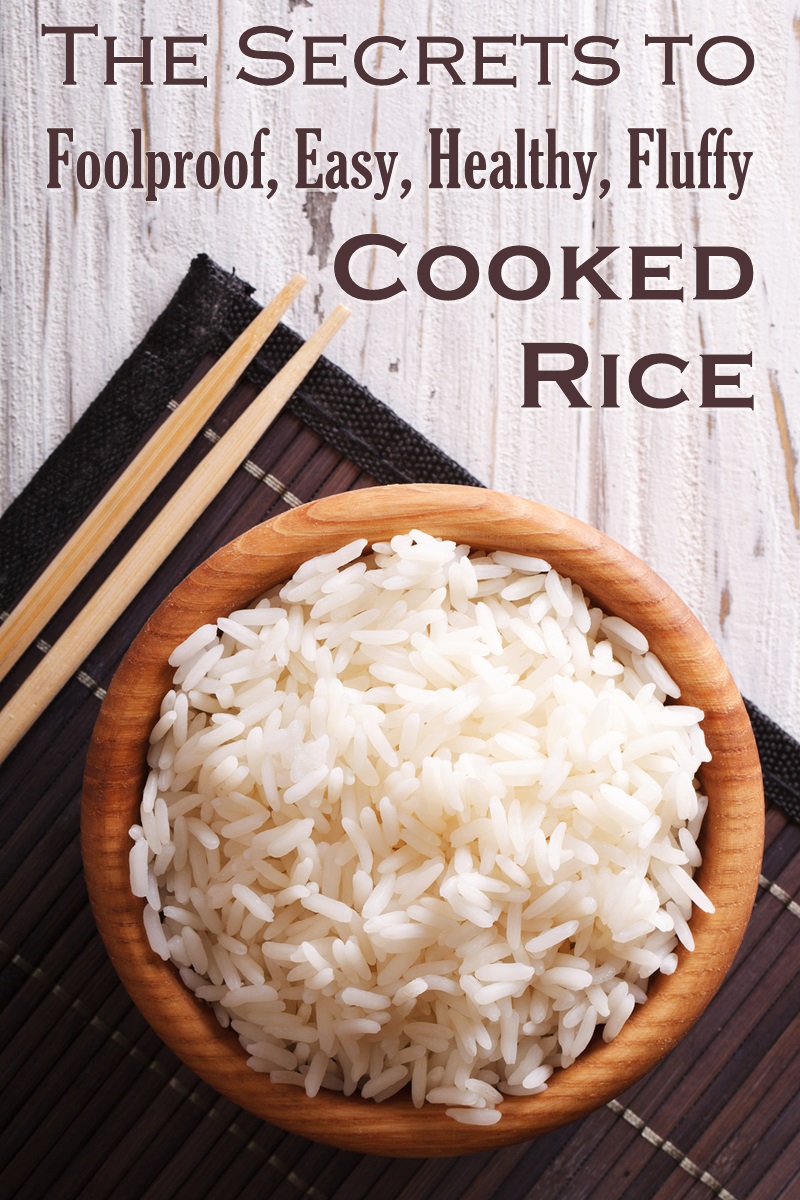
Choosing the Right Rice
Purchasing organic rice doesn’t appear to lower the arsenic risk. Rather studies show that where the rice is grown seems to make the biggest difference.
 Higher levels of arsenic were found in rice grown in Texas, Louisiana, Arkansas and Missouri, where the land had previously been dedicated to high-pesticide cotton crops. But California rice showed lower levels of arsenic. Also, basmati and jasmine rice from Thailand or India had lower levels of arsenic than most U.S.-grown rice. We regularly purchase Thai jasmine rice at Trader Joe’s and World Market for a good price.
Higher levels of arsenic were found in rice grown in Texas, Louisiana, Arkansas and Missouri, where the land had previously been dedicated to high-pesticide cotton crops. But California rice showed lower levels of arsenic. Also, basmati and jasmine rice from Thailand or India had lower levels of arsenic than most U.S.-grown rice. We regularly purchase Thai jasmine rice at Trader Joe’s and World Market for a good price.
Another big surprise was that brown rice has 80 percent more inorganic arsenic than white rice of the same type. The chemical accumulates heavily in the hull of brown rice, which is removed in the refining process to make white rice. For brown rice fans, brown basmati from California, India, or Pakistan has about one-third less inorganic arsenic than other types of brown rice.
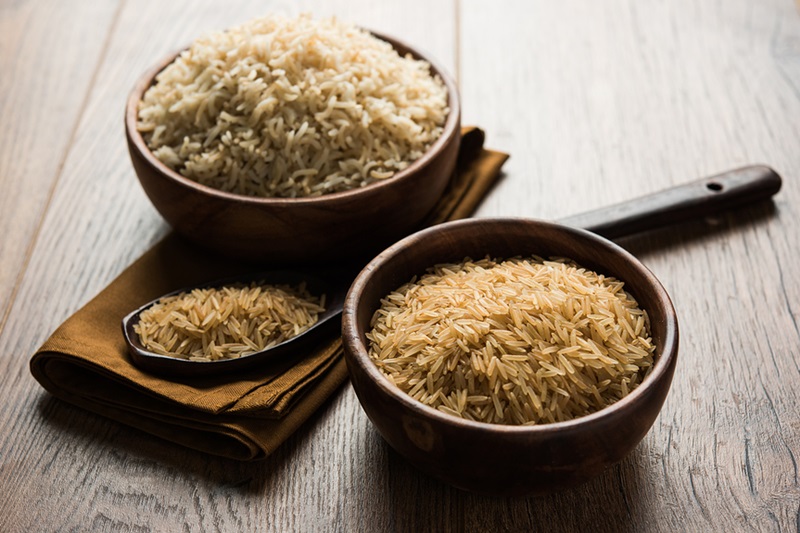
How to Safely Store Cooked Rice
Cooked rice is a surprisingly quick danger for bacteria. To keep it safe, cool leftover cooked rice, and refrigerate it within 2 hours of preparation and use or freeze it within 2 days.
To freeze, place cooled cooked rice in a freezer-safe baggie, pressing any excess air out as you seal it. Flatten the baggie so that the rice is in an even layer and freeze. Frozen rice defrosts quickly for pudding, fried rice, or other convenient meals.
Why We Love Leftover Rice
A funny thing happens to rice when it is cooled. The resistant starch levels increase by about 250%, resulting in a much lower glycemic response. Resistant starch is also recognized for its prebiotic properties and for improving the integrity of the gut. Which is why even the Primal guy gives rice the thumbs up for most people.
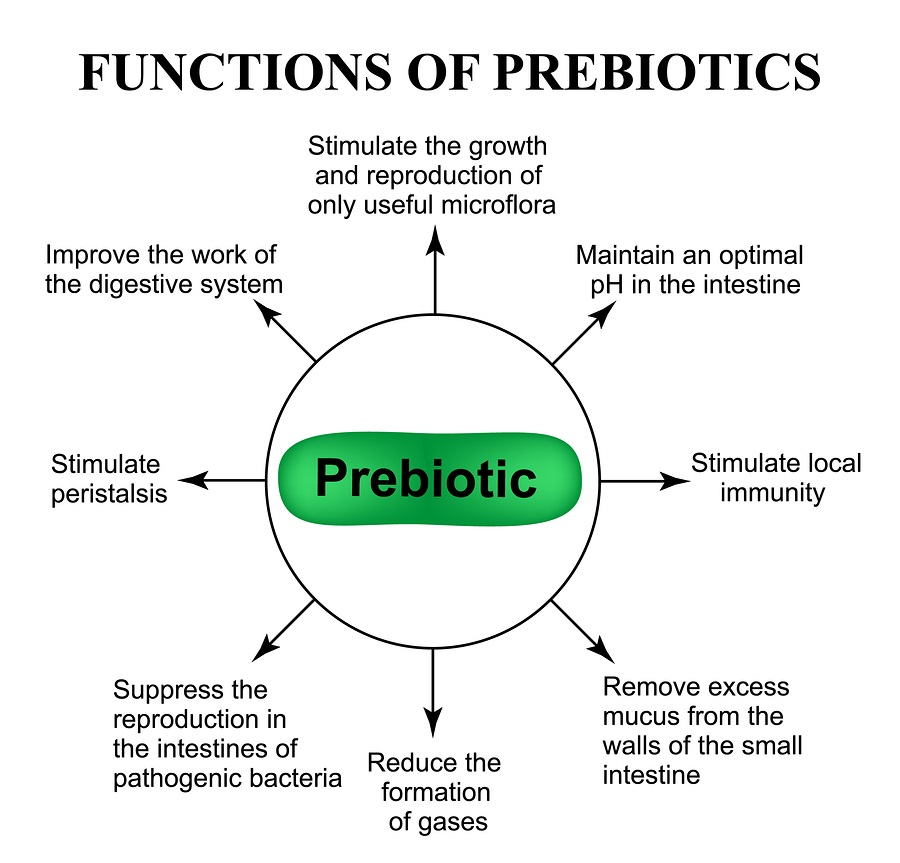
Special Diet Notes: How to Make Rice
By ingredients, this very basic recipe is dairy-free / non-dairy, egg-free, gluten-free, nut-free, peanut-free, soy-free, vegan, plant-based, vegetarian, and top food allergy-friendly.
- ¼ cup uncooked rice per serving (Your choice of type; see post above for recommendations)
- 1½ cups water
- Place the uncooked rice in a fine mesh strainer, and thoroughly rinse.
- Put the water in a pot and bring it to a boil as you would for pasta. Add the rice, stir, and let cook uncovered for 12 to 15 minutes (for white rice) or 30 to 40 minutes (for brown rice), or until tender and cooked to your liking. Check in and stir the rice after the first few minutes of cooking to ensure no grains are sticking to the bottom.
- Thoroughly drain the rice using a fine mesh strainer, and return it to the pot. Cover and let the rice sit (off the heat) while you prepare the rest of your meal. It will soak up any residual water and fluff up a bit.
More Helpful Guides
Our Favorite Healthy Store-Bought Snacks

What is Coconut Milk? The Useful Guide from Beverage to Cream
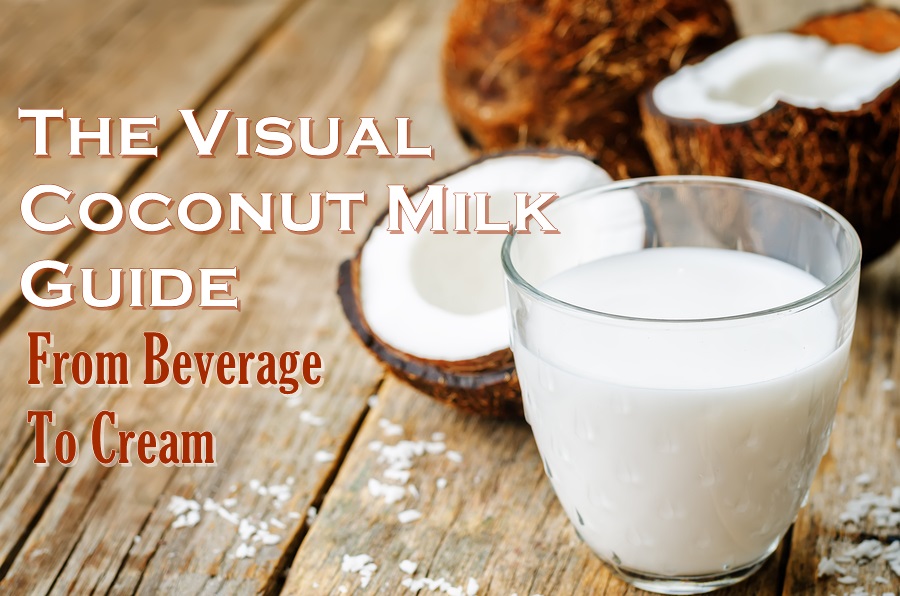

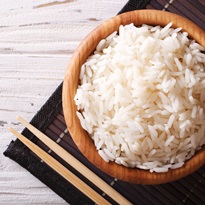
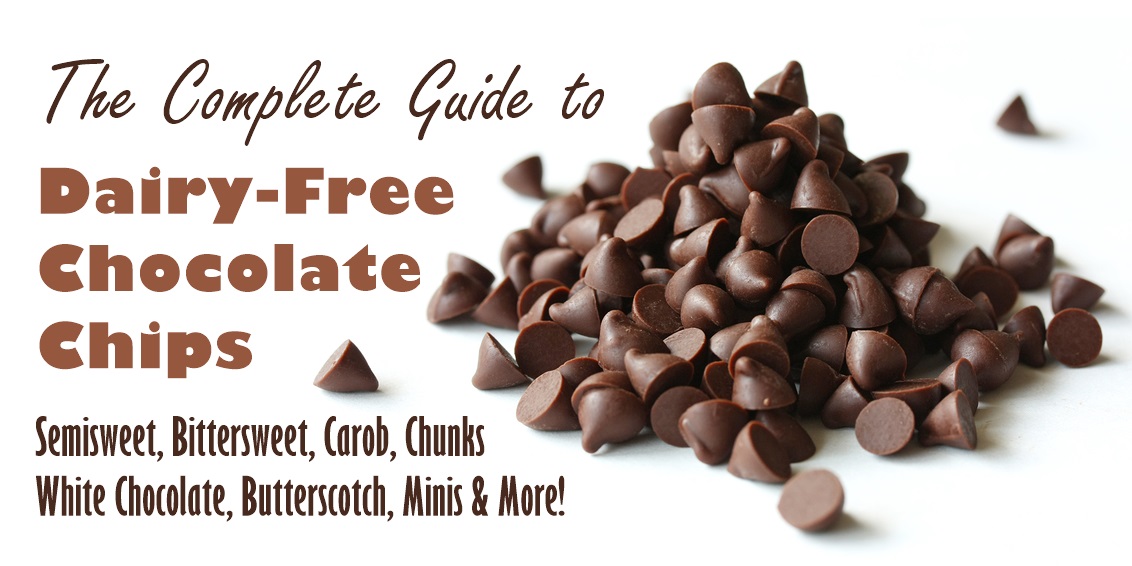

23 Comments
Pingback: Go Dairy Free Meal Plan: Easy Family-Friendly Version (Printable!)
Pingback: Go Dairy Free Meal Plan: Top Allergy-Friendly Version (Printable!)
Pingback: Go Dairy Free Meal Plan: Comfort Food Version (Printable!)
Thanks for info .. due to allergies have to eat a lot of rice …
Happy to help Judy! It’s a staple for my husband, too.
Pingback: Sizzling Vegetable Fried Rice Recipe: A Fresh Take on an Asian Classic
Pingback: Garlicky Greek Chickpeas & Spinach Recipe (Vegan & Gluten-Free)
Pingback: Eat Dairy Free 'Keep it Simple' Menu Plan with Printable Shopping List
Pingback: Eat Dairy Free Ingredients: The Brands Used for Cookbook Recipe Testing
Thank you so much! Our son is allergic to wheat, so we eat a lot of rice products in our house. I didn’t know that rice was unsafe to eat after a few days in the refrigerator!
Happy to help Leslie!
Thanks for your post. I have to admit that I have shied away from rice after hearing about the Arsenic content so hopefully this will help me get away from that fear. I wonder where Indian restaurants typically get their rice from though i expect that might vary a great deal by restaurant.
Surprisingly, low arsenic rices aren’t necessarily expensive ones. A lot of our rice comes from Thailand and India, so it’s very possible that restaurants are using varieties that are lower in arsenic.
After I finished reading your cookbook I wanted to make rice and tried your method and it worked so well! The last step of letting it fluff was fantastic!! Change my rice making game 😀
Yay! I’m so glad you tried it out – I agree, game changing!!
Definitely need to try the pre-soaking! I prefer brown rice so I guess I need to start checking where my rice was grown!!
Yep, fortunately, lower arsenic varieties are pretty easy to find!
We love rice in our family . I can’t wait to try making it in a pot!
You have done a lot of research! This is so helpful. I am looking forward to your cookbook and trying the recipes.
I have heard of this method of rice cooking before, but I didn’t realize the arsenic connection. The presoak sounds like a good way to go, too.
Yes, admittedly I’m horrible at meal planning so I rarely get to pre-soaking the rice, but it helps immensely. And this cooking method is the bomb! I love it – perfect rice every time and no sticking!
This has been quite an education for me. We eat a lot of rice! I make a big pot every week. Next time, I’ll try your instructions.
Us too! We’re rice-aholics 🙂